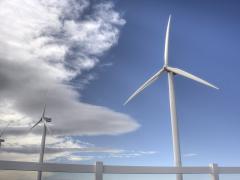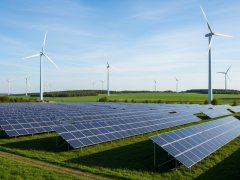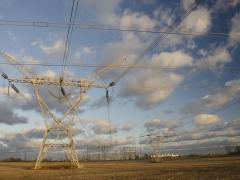South Africa’s commercial and industrial (C&I) energy users are moving beyond diesel backup towards hybrid systems that blend solar photovoltaic (PV), battery storage and digital controls – a shift aimed at improving resilience and reducing dependence on the national grid.
This transition from backup power to grid-interactive hybrid systems was a central theme at the C&I Energy + Storage Summit in Johannesburg from November 4-5 when large power users, financiers and technology suppliers discussed strategies for achieving operational independence amid grid instability and rising tariffs.
Energy Intensive Users Group Chairperson Murendeni Matshinyatsimbi said the C&I sector now represents a major share of renewable and hybrid projects in development. “We are convening at a crucial time,” he noted. “There are over 220 MW of C&I projects currently in the pipeline – about half include storage integration.”
Matshinyatsimbi cautioned that South Africa’s industrial base cannot remain competitive without reliable and affordable electricity. “For our industry to remain industrialised, electricity must be available and affordable,” he said. “If the transition to cleaner power does not include sufficient generation and grid capacity, industrial output will continue to contract.”
Andrew Etzinger, General Manager: Market Services and the International Trader at the National Transmission Company South Africa, said daytime demand now represents the grid’s lowest load period due to the rapid rollout of solar generation. “That shift reflects how PV is reshaping system dynamics,” he said. Etzinger added that transmission reform, private-sector participation and regional trading “are irreversible steps towards a more competitive power market”.
A case study presented by Freedom Won showcased the Rosebank Mall hybrid energy installation developed in partnership with Hyprop Investments. The system comprises a 4,5 MW solar PV plant and a 7,2 MWh lithium-ion battery array – managed through automated control software. The project was cited as an example of commercial properties reducing grid reliance while optimising energy costs and emissions.
Standard Bank Executive Head of Energy, Infrastructure and Mining Deerosh Maharaj said battery capacity in the C&I segment is scaling rapidly, typically ranging between 5-20 MWh per site. “These developments, supported by smart inverters and grid-synchronised control systems, will enable real-time load balancing, peak shaving and energy arbitrage – all critical for improving power quality and operational independence,” he said.













